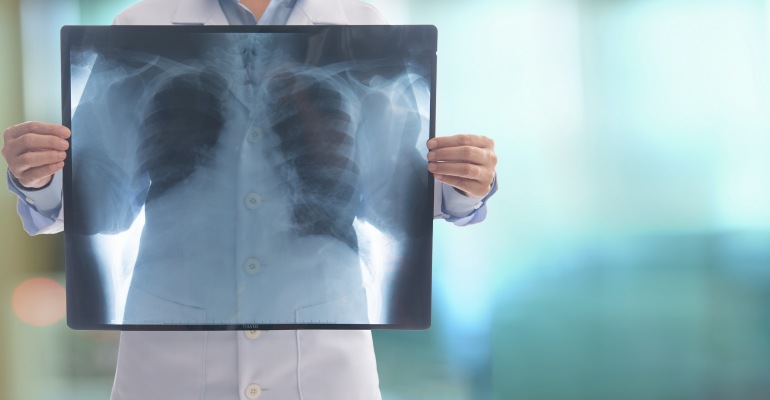The physical edition of FIME opens today at the Miami Beach Convention Centre. However, for those not attending, the online edition of the event that has been live from August 2 and will run until October 1, has a slew of virtual conferences discussing key topics that are changing the course of healthcare. One of them is AI in medical imaging: current state and future state by Dr Vijay Rao, discussing the future of imaging and diagnostics navigated through the lens of AI.
Radiology has been at the leading edge of the technological and digital revolution in medicine over the past several decades with the advent of CT, ultrasound and MRI. The next frontier innovation that will once again transform the future practice of Radiology to improve outcomes and patient care is Artificial Intelligence, which includes machine and deep learning.
With the technology revolution, there has been an explosion in the number of images, which necessitated the evolution of Picture archiving and communication systems (PACs). However, this has also created isolation of radiologists as clinicians have access to images on patient floors – they don't feel the need to come down to the department any longer. There are about two trillion images that are produced per year globally and half of them are from the U.S., which necessitates the need for storage. There are several challenges for radiologists because of data explosion. In addition to a shortage of radiologists, there's an emphasis on more productivity, which is leading to burnout of radiologists.
Machine learning is a data science methodology that enables the creation of algorithms that can self-learn and improve with exposure to large data sets. AI is not new by any means, it's been around since the 1950s, however, there are some key areas within radiology where its taking centre stage:
- With advances in AI with machine learning and neural networks, now we can simulate the environment, which was almost similar to the brain neural networks.
- For test selection, AI can help in building appropriate tests for the clinicians, generate the report, and help in how the results can be communicated. The protocols can be auto-generated by triage, and patients can be categorised according to case basis to reduce the length of stay.
- For scanning, smart machines are coming into play that can lower radiation doses, order quality assurance, classify diseases, reduce scan times, and prioritise work lists and changing protocols.
- Cognitive assistance with interpretation, assistance with workflow beyond interpretation, assistance with quality and safety of patient care, and assistance with lowering costs and better outcomes are four areas of machine learning and medical imaging. There have been several early achievements at image classification or detection of disease using AI, some of them being cases of stroke, cerebral haemorrhage, breast masses, lung nodules, spinal stenosis, bone age, pneumonia, and colon polyps.
- AI will assist radiologists in becoming more efficient by automating time-consuming tasks such as lesion counting, the number of metastases in the brain, and liver measurements. Another value add of AI is its accuracy and precision and reducing physician workload.
- AI assists with change detection and monitoring comparisons during therapy, detecting subtle changes which are not visible to the human eye. When it comes to physiologic assessments, AI performs better than the human eye in measuring the level of stenosis, measuring the tumour size, and all the physiologic changes of circulation.
- In the future, neural networks or AI can accurately classify genetic mutations in gliomas. We are now entering the realm of predictive medicine that takes us to precision imaging, which enables personalised treatment by accurately measuring the impact of therapy. This entails detection, quantification, predicting the nature of the tumour, and which therapy would suitable. In addition, by predicting and using imaging biomarkers, the need for interventions or biopsies can be reduced.
- Workplace virtualisation and communication is another important area. AI assistants can scan the cases rapidly and alert the provider if there's a critical finding. It can also highlight and prioritise the radiologist’s worklist to filter their study and accordingly identify which should be reviewed and reported first. Using natural language processing, there are concepts that can be traced from the report to automate several processes using the metadata logic layer. This can create actionable findings to highlight critical results and send information to the data registry. Different versions of the reports can be created, either a simplified version for the patient or one that provides data for research.
To conclude, radiologists will often embrace AI applications to carry out time-consuming quantitative work and spend less time in front of computers – it will truly be a man/machine partnership. Not all the imaging benefits are pixel-based, many of the useful applications will come from non-excel based data analysis that are improving workflow, making radiologists more efficient, reducing burnout, etc. With initial approval by the U.S. Food and Drug Administration (FDA) and a temporary payment model by the Center for Medicare and Medicaid Services (CMS) in the U.S., it is likely that AI costs will become a cost of doing business and be absorbed by radiology practices and hospitals in the future. Future imaging scanners and interpretation platforms will have built-in AI applications.
Hope is that such advances will help democratise healthcare for the underprivileged and underserved at lower cost and facilitate global outreach, therefore, AI will augment not replace radiologists.
To watch the full session, click here to register.


